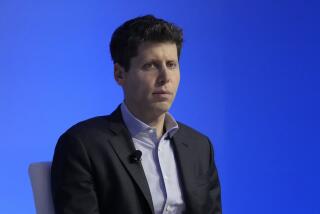SolarCity wins a big infusion
- Share via
U.S. financial markets are in the doldrums, but things look bright for SolarCity.
The Foster City, Calif., solar installer said Wednesday that it had received $30 million in funding to help it finance its U.S. expansion.
Most of that equity -- $25 million -- is coming from First Solar Inc. of Tempe, Ariz., a manufacturer of thin-film photovoltaic solar modules, which also struck a five-year supply deal with SolarCity Corp. The remainder is coming from Bay Area venture firms Draper Fisher Jurvetson and DBL Investors, SolarCity Chief Executive Lyndon Rive said.
The financing marks the fourth round of funding for SolarCity. The firm, launched in July 2006, has raised a total of $56 million. PayPal co-founder and Tesla Motors Inc. chief Elon Musk is an investor as well as chairman of SolarCity.
Investment in the fast-growing renewable energy sector has been slowed of late by the U.S. credit crisis and falling prices for petroleum and natural gas. But Rive predicts the deceleration is only temporary and that concerns over climate change and energy security will continue to fuel the industry.
“The fact remains that we have to develop an alternative” to dirty fossil fuels, he said.
In a business dominated by mom-and-pop installers, SolarCity has quickly grown into one of the largest players in the nation. The privately held firm doesn’t disclose revenue. It employs about 420 people and has installed about 1,500 photovoltaic systems on homes and businesses in California, Arizona and Oregon.
The company has pioneered a leasing program that allows homeowners to put solar panels on their roofs for little or no money down. Rive said the new round of funding would help SolarCity push into as many as 10 new states next year, including on the East Coast.
Module manufacturer First Solar is looking to expand into the residential market with its thin-film technology. Under the deal announced Wednesday, it will supply 100 megawatts of panels to SolarCity, which will begin installing them on customers’ roofs next year.
Solar cells traditionally have used crystalline silicon as a conductor. But the high cost of those wafers has led the industry to look for lower-cost alternatives. Thin film uses cheaper conducting materials. Although silicon still dominates the industry, thin film is rapidly gaining market share.
On Wednesday, First Solar reported that its third-quarter net income more than doubled to $99.3 million compared with the same quarter last year. Its shares closed at $115.75, up $1.66.
--
More to Read
Inside the business of entertainment
The Wide Shot brings you news, analysis and insights on everything from streaming wars to production — and what it all means for the future.
You may occasionally receive promotional content from the Los Angeles Times.









